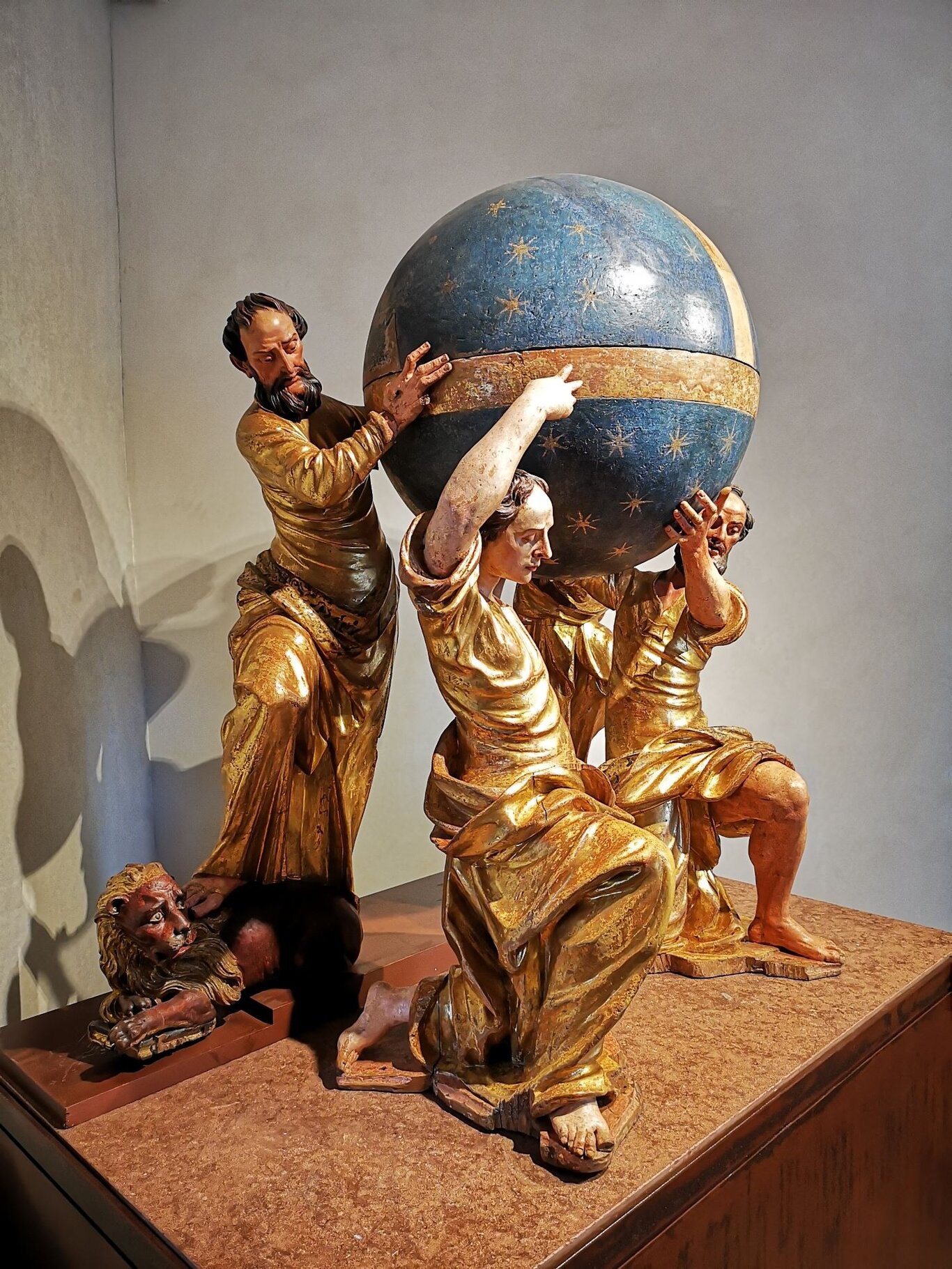The itinerary to see art treasures in the churches in and around Feltre is ample and varied. Religious buildings in the city of Feltre and the surrounding area are numerous with plenty to interest you. To appreciate its beauty, spend two days on this route.
Start your itinerary in Feltre by looking inside San Pietro Cathedral. The building is a reconstruction done after the invasion of Maximilian of Habsburg in 1510, which left only the crypt and the Gothic apse unscathed, and in later centuries, Giuseppe Segusini and Alberto Alpago Novello worked on it.
Notice its structure divided into 3 vaulted naves, with 5 entrances and 10 side altars. The apse is elevated, partly due to the crypt below and flanked by two deep chapels. The counter façade is largely occupied by the choir loft with a Gaetano Callido organ.
The works of art inside are numerous and tell the story of different moments in the building’s life. Just to name a few: the paintings on canvas of Pietro Marascalchi, the wooden statue of the Redeemer by Francesco Terilli. The piece with St Jerome attributed to Tintoretto, the large wooden crucifix on the triumphal arch, perhaps attributable to master carver Vittore Scienza and painted by Lorenzo Luzzo.
To complete your look inside this important historical and artistic monument, descend into the crypt and go into the sacristies.
Next, go inside the 15th-century church of San Giacomo, which today owes its typically Neoclassical appearance to the 19th-century intervention of Giuseppe Segusini.
The entrance portal crowned with a lunette, representing the oldest exterior wall painting in the city, should draw your attention.
After crossing the entrance, observe the impressive polychrome marble altar which arrived after suppression of the convent of St Clare and, enclosed is a panel painting of the Madonna and Child, St James and St Martin attributed to Girolamo Lusa, an artist from Feltre. Do not miss seeing The Custody of St Theodora, a masterpiece by Andrea Brustolon, made in 1696 for the Augustinian nuns of St Peter in Chains and acquired by the Church of San Giacomo in 1807. Before leaving, look closely at the organ in counter façade and the crypt carved out in 1947 and dedicated to Saint Rita of Cascia.
Then reach Turrigia district and look inside the small church of the Santissima Trinità characterized by a beautiful late Gothic fresco cycle commissioned by the Dal Corno family from Treviso.
For the next stage, see inside the church of Santa Maria degli Angeli. Originally the complex, whose construction was promoted by Blessed Bernardino Tomitano, consisted of a church and convent dedicated to the Poor Clares. In 1806, the convent became state property and was later used as a barracks, and in the mid-19th century, Segusini gave the church the new Neoclassical arrangement. In 1894, a raging fire destroyed the cloister sparing only the wing beside the church.
Go to Anzù next, where the Shrine of Saints Victor and Corona dominates the landscape from the slopes of Mount Miesna. To reach the large complex, formed by convent, cloister and sanctuary, take the scenic 7-flight staircase built by Segusini, or the scenic path.
The shrine is one of the most significant examples of medieval architecture in the upper Veneto region and will fascinate you with its atmosphere and the precious heritage it holds. The martyrium is surely the heart of the shrine with the ark of the Holy Martyrs Victor and Corona in the centre, surrounded by a loggia characterized by 8 capitals and fine fresco decorations.
From here, head to Villabruna to look inside the church of San Giorgio which holds one of the rare paintings by Lorenzo Luzzo still in the area depicting the Madonna and Child with Saints George and Victor.
Worth a stop in Lamon is the church of San Pietro Apostolo, embellished by a high altarpiece designed by Pietro Marascalchi inserted in the monumental wooden altar along with two painting on canvas by Antonio dal Zocco. Your attention will also be drawn by the Madonna and Child and St John the Baptist as a Boy by Francesco Frigimelica.
Reach the hamlet of Servo in Sovramonte where the church of Santa Maria Assunta is located. Restorations carried out between 1968 and 1971 unveiled precious medieval and Renaissance frescoes of great quality. See the silver processional cross dating from the late 15th and early 16th centuries, a splendid example of liturgical goldsmith art.
To conclude your visit, go on the municipalities of Fonzaso, Arsiè and Quero, part of Belluno province but for centuries belonging to the Diocese of Padua.
At Fonzaso, look inside the little church of St Justine you can reach with a short walk. Inside you can admire a ruined but valuable painting cycle. At Arsiè in the church of Santa Maria Assunta, the late 15th-century sculptural group depicting the Madonna and Child is interesting. We do not know its origin but know from factual records that from time immemorial it was carried in procession in times of danger to obtain the saint’s protection.
The last stop to discover the art treasures in the churches in and around Feltre is the church of Santa Maria Assunta in Quero to admire the Coronation of Thorns made by Tintoretto for the church of the Holy Cross in Belluno.
